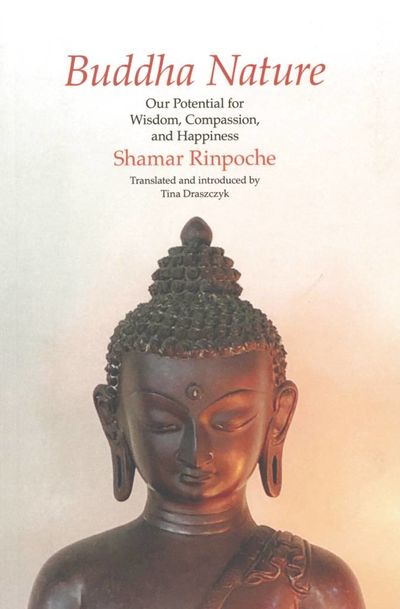|
|
| Line 13: |
Line 13: |
| |FullTextRead=No | | |FullTextRead=No |
| |TextTranslated=Texts/De bzhin gshegs pa'i snying po bstan pa'i bstan bcos | | |TextTranslated=Texts/De bzhin gshegs pa'i snying po bstan pa'i bstan bcos |
| | |BookToc=*{{i|Preface by Jigme Rinpoche|ix}} |
| | *{{i|Preface by the translator|xi}} |
| | *{{i|Introduction by the translator|1}} |
| | |
| | *{{i|'''Buddha Nature:'''|13}} |
| | **Our Potential for Wisdom, |
| | **Compassion, and Happiness |
| | *{{i|Ignorance does not have a concrete beginning, but it does have an end|15}} |
| | *{{i|Scriptural sources|19}} |
| | *{{i|Mind, the foundation of everything|21}} |
| | *{{i|Begin with bodhicitta|25}} |
| | *{{i|Buddha wisdom, the true nature of mind|29}} |
| | **{{i|The thirty-two qualities of the dharmakāya|29}} |
| | **{{i|The ten powers (qualities 1-10)|29}} |
| | **{{i|The four types of fearlessness (qualities 11-14)|34}} |
| | **{{i|The eighteen qualities exclusive to buddhas|37}} |
| | ***{{i|Behavior and way of training sentient beings|37}} |
| | ***(qualities 15-20) |
| | ***{{i|The realization of buddhas (qualities 21-26)|40}} |
| | ***{{i|The activity of buddhas (qualities 27-29)|42}} |
| | ***{{i|The wisdom of buddhas (qualities 30-32)|43}} |
| | **{{i|How can qualities be present but not manifest?|43}} |
| | **{{i|The special qualities of the form kāyas|46}} |
| | **{{i|Purification of obscurations|50}} |
| | **{{i|The all-accomplishing wisdom|52}} |
| | **{{i|The wisdom that knows the variety of appearances|54}} |
| | **{{i|The wisdom of equality|55}} |
| | **{{i|The difference between an arhat and a buddha|55}} |
| | **{{i|The form kāyas do not resemble an ordinary body|56}} |
| | **{{i|Ignorance and illusory appearances do not reoccur|56}} |
| | **{{i|Buddha nature resembles gold ore|57}} |
| | **{{i|Purification: its basis, object, method, and result|58}} |
| | ***{{i|The basis of purification|58}} |
| | ***{{i|The object of purification|58}} |
| | ***{{i|The method of purification|59}} |
| | ***{{i|The result of purification|59}} |
| | *{{i|Concluding advice|61}} |
| | |
| | *{{i|'''Revealing Buddha Nature'''|63}} |
| | *A treatise by the 3rd Karmapa, Rangjung Dorje |
| | *{{i|Endnotes|79}} |
| | *{{i|About the Author|83}} |
| | *{{i|About the Translator|85}} |
| |AddRelatedTab=No | | |AddRelatedTab=No |
| |PostStatus=Needs Final Review | | |PostStatus=Needs Final Review |
| | |StopPersonRedirects=No |
| }} | | }} |


